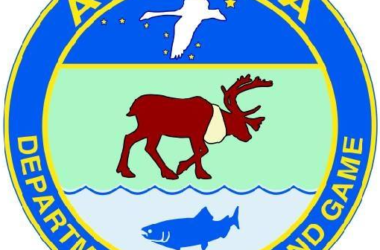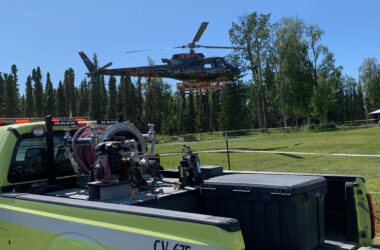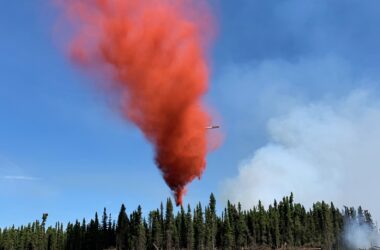Construction is set to begin mid-May on the long-anticipated Kenai Bluff Stabilization Project, an effort aimed at protecting critical infrastructure and property along the eroding shoreline near Old Town Kenai.
The U.S. Army Corps of Engineers and the City of Kenai held a community update last week, outlining the scope, timeline, and environmental considerations of the massive rock revetment project. The work will fortify approximately 5,000 feet of bluff from near Ryan’s Creek to just above the dock area, stabilizing the area against ongoing erosion that’s already threatened roads, homes, and sewer lines.
“One of the goals is to keep those houses on the bluff, keep buildings intact, and keep the sewer lines underground and not falling into the river,” said Leif Hammes, project manager with the U.S. Army Corps of Engineers. “Over the years, roads and buildings have continued to go off the edge. This project is about stopping that.”
The total project has been estimated to cost around $41.6 million, though the primary construction contract awarded to Western Marine Construction in February 2024 is valued at approximately $19.3 million. The difference includes design, permitting, contingency funds, and other administrative or environmental costs.
Since the contract award, crews have been preparing massive rock stockpiles at Sand Point, where thousands of tons of armor stone have been staged for transport to the bluff site. According to Hammes, barges are expected to begin delivering rock as soon as May 16, with two vessels cycling loads from Sand Point to Kenai throughout the summer. Construction is expected to continue through early October and wrap up by Oct. 3, 2025.
“This is when we’ll finally start to see some of that progress take shape,” Hammes said. “Western Marine’s been breaking their humps out there getting rock ready—we just haven’t seen it on-site yet.”
The bluff stabilization design includes a deep rock toe and armor stone wall, meant to absorb wave and current impacts while preventing further bluff retreat. But the project also includes environmental safeguards.
Because Cook Inlet beluga whales are listed as an endangered species, construction is limited to a seasonal window after their typical migration out of the area. Hammes said NOAA has authorized activity to begin after May 15, with strict buffer zones in place.
“If there’s a whale in the area, we have to stay at least 150 meters away,” Hammes said. “We’ve worked closely with NOAA to ensure we’re protecting the belugas and minimizing disruption.”
The Corps has also asked dipnetters and subsistence users to avoid placing setnets or gear in the project zone this summer to allow barges and construction crews full access to the shoreline.
The City of Kenai and project partners held a ceremonial ribbon cutting last summer, but the most visible phases of construction are just now getting underway.
“From here forward, we’ll start to see real activity—rocks being placed, barges moving in and out,” Hammes told the crowd. “It’s been a long time coming.”
The Kenai Bluff Stabilization Project is being funded through a mix of federal and local contributions. Western Marine Construction will manage the bulk of the on-site work with oversight from the Corps and HDR, the project’s lead design firm.
For more updates or project maps, visit the City of Kenai’s website or the U.S. Army Corps of Engineers project page.






